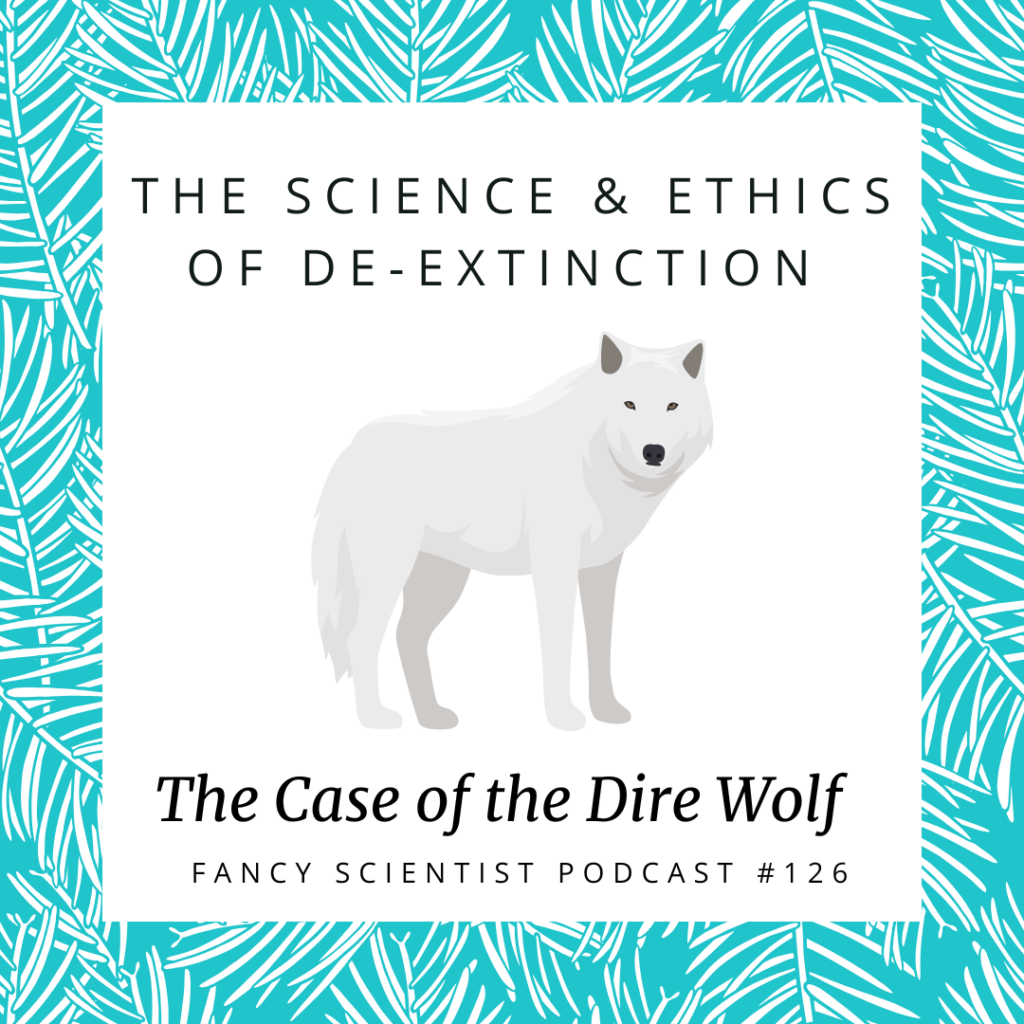Chances are, you’ve seen the headlines that the dire wolf is no longer extinct. The company Colossal Biosciences claims to have brought it back from extinction in the form of three living, breathing dire wolf pups.
But my headlines have actually been flooded with scientists saying “not so fast…” so what is really going on here?
Listen to Facts The Science and Ethics of De-extinction:
Powered by RedCircle
Having studied African forest elephants using genetics during my Ph.D., a species related to the extinct woolly mammoth and a target of de-extinction efforts, this topic has long been on my mind to discuss on the podcast!
"If you took a chimpanzee and made edits on 20 genes, do you think you would get a human?"
Given the recent dire wolf news, I’ve been getting so many questions about this, that I thought it would be a great time to discuss this and prepared this episode as soon as I could (despite a myriad of technical difficulties).
"Resurrecting an ancient species is like buying a jigsaw puzzle from a garage sale...There's going to be pieces missing pieces and you don't even have a picture on the box, to follow"

If an Asian elephant is raising a woolly mammoth calf, is it actually going to behave like a wooly mammoth?...There's more that goes into a species than just having the DNA.
Specifically, I go over:
- What exactly is de-extinction and how it can be done
- Why de-extinction is so hard to actually do
- How Colossal Biosciences resurrected what they are calling the dire wolf
- What scientists think of Colossal’s dire wolves; are they really dire wolves? Why or why not?
- Insights on how scientists think about species in general
- What else goes into a species being a species aside from genetics
- What is the point of de-extinction? Why should scientists attempt it?
- Which kinds of species are being considered
- My opinions on de-extinction: which species are okay to bring back and why
- Does de-extinction help conservation? How?
- How de-extinction can hurt conservation efforts
- How the Trump administration is attempting to use de-extinction efforts to undermine the Endangered Species Act
- And more!
Resources and Sources the Science and Ethics of De-extinction:
And make sure you sign up for my next free training!

Stephanie Manka
Stephanie Manka, Ph.D. is a wildlife biologist with 20 years of experience in mammal ecology and conservation, education, and outreach. Read her story to find out how she went from the daughter of a jeweler to a Ph.D. in wildlife biology.
You May Also Like
Love this post? Share it with friends!






